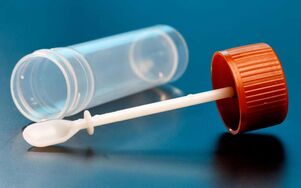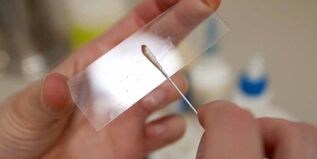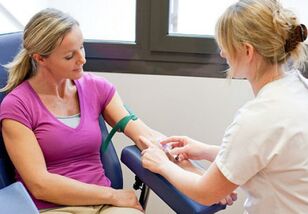What tests should be taken to identify worms?
Regular worm tests must be performed to detect diseases in time. The most famous of these is the analysis of feces, which is done before finding a job or going to a nursing home, but this is not the only and not the most reliable way to identify parasites. The combined test will give the most accurate answer.
What worm tests exist
The list of checks that must be done to determine the parasite is long.
The main ones are:
- Stool analysis (also called worm eggs) is the most common method. Advantages-Mass use without complicated equipment. Less-lack of accuracy;
- ELISA, also known as worm blood test. Advantage-high precision. Disadvantages-only show certain stages of parasite development, other times the results will be doubtful;
- Analysis of other biological media (urine, sputum, duodenal contents, epidermis). Advantages-through them, you can identify parasites in locations that are not accessible to other analyses. Disadvantages-bring great inconvenience to patients.
Usually, a combination of several tests is prescribed for patients to identify parasites. The criteria for recovery are considered negative by ELISA and several negative results of the biological environment in which the worms were detected.
Fecal analysis of worm eggs
Most worms live in the intestine, so the most common test for worms is the stool test. He is required to undergo regular medical examinations for adults and children, and then sent to a nursing home or children’s camp as part of the health manual during hospitalization. Similarly, people who have come into contact with infected patients, eat untested food, and notice the typical symptoms of worms can also perform this analysis.

No special preparation for analysis is required. You can collect stool at any time of the day, but the most indicative is morning stool. Before childbirth, the perineum should be flushed immediately to prevent impurities in the urine and discharge from the genitals.
The feces used to analyze worms are collected in a special container. It is sealed and comes with a special spoon to collect materials. To collect the most useful part of the material, you need to take a sample from a part of the stool. The container needs to be filled about one third. You need to deliver it to the laboratory on the same day.
In the laboratory, experts examine the stool under a microscope and identify the worm eggs in it. Most of them have characteristic shapes that allow you to accurately determine the type of worm. Based on the results of the analysis, a conclusion is reached about the absence of eggs or the existence and type of eggs, and then therapeutic measures are taken.
This is the most common but least accurate worm test. The reason is that although there are worms, there may be no eggs in the part that enters the container. Therefore, if the patient complains of characteristic symptoms or has been exposed to a source of infection, 5-6 tests over 2-3 days are required. In this case, the possibility of detecting parasites greatly increases. In addition to studying stool, other diagnostic procedures are also prescribed.
Shaving the skin

This analysis is usually a supplement to stool analysis. The most accurate results are obtained when diagnosing pinworms, which lay eggs on the surface of the skin near the anus. Indications for such analysis are routine examinations of children and adults, registration of children in kindergartens, schools, camps or nursing homes, hospitalizations of children and adults, suspected pinworm infections (anal itching, digestive diseases, andPatient contact). In most cases, children suffer from this disease, which explains the name of the worm (child worm).
There is no need to prepare for worm analysis, you should not wash the perineum-so you can wash off the parasite eggs, you need to avoid bathing or showering the night before. The analysis was done in the morning. Using a special film, material can be collected from the skin of the hip fold. The research is also carried out under the microscope. Except for pinworms, it cannot detect other worm diseases.
Urinalysis
This test is the least commonly used test because parasites almost never live in urine. It is possible to find pinworms in urinalysis, but this indicates a violation of the rules of analysis-the parasite and its eggs enter the container from the perineal skin. In most cases, this happens to girls, and fewer boys.
But there are still signs of testing. Some tropical parasites live in the kidneys and urinary organs, and a person is "rewarded" for traveling to resorts in Asia and Africa. With the increase of foreign leisure areas, the spread of parasites in our country is also decreasing. Therefore, it is recommended to perform urine and blood tests for worms after traveling in a resort.
Types of worms found in urine:
- Trichomonas;
- hematopoietic bacteria;
- Filaria sanguinis hominis;
- Echinococcus taconia.
There may also be liver parasite eggs-Echinococcus and fluke in urine.
Sputum analysis
There are many parasites that spend all or part of their lives in the lungs. Their appearance is not characteristic-catarrhal phenomena (inflammation, coughing, wheezing) appear in the bronchi. There may be hemoptysis, pneumonia of unknown origin and other pulmonary phenomena.
Parasites detected by the sputum worm test:
- A worm disease-they need oxygen in the larval stage; Escherichia and pneumococcus-tissue parasites residing in parenchymal organs including lungs;
- Dwarf fluke-mainly lives in the lungs;
- Strongyloidiasis, non-sarcoidosis-parasitic disease is characterized by localization of the intestines and the location in the lungs is found to be atypical.
In order to collect sputum, no special preparation is required, but it is recommended that you brush your teeth in the morning and remove the material. Until then, drinking plenty of water is useful-this can improve the ability of sputum to expectoration. The collection container must be clean, but not necessarily sterile-bacteria do not play a role in diagnosis. In this case, both the parasite itself and its eggs are detected. If the patient is unable to cough up sputum, it can be removed from the trachea by vacuum suction.
Drugs that improve sputum discharge and stimulate its formation can be used to obtain more accurate worm analysis results. Combined with blood tests for worms, very accurate results can be obtained. Unlike a stool test, eggs are easier to detect.
Blood test

ELISA or blood test for worms is the most accurate way to identify worms. Worms can cause a strong response from the immune system-the content of eosinophils increases, the production of immunoglobulins increases, and specific antibodies against the parasites appear. Based on their testing, an ELISA method was established.
Parasite antibodies are extremely specific-they can be diagnosed clearly, and they will only be present in the blood if the parasites are present and within 3 weeks after their disappearance.
Analysis requires blood. No special training is required. The results can be obtained within two days. The accuracy is close to 100%, and the specificity of the antibody does not allow false results. The criterion for recovery is a negative result one month after treatment.
Duodenal content analysis
The ducts of the bile duct and pancreas lead to the duodenum. These organs are usually affected by hydatid disease and aspirinosis. The parasite lays eggs, which enter the intestine through the tube. The worm analysis method of the duodenal contents allows you to identify these diseases more accurately than stool analysis.
Take the material on an empty stomach with a duodenal probe. If the patient has a significant gag reflex, pain can be relieved. This procedure is very unpleasant, so it should only be used if other test results are doubtful.
When is a worm test required
A worm test should be performed in the following situations:
- The patient is experiencing symptoms of worm infection;
- The patient has been exposed to the source of infection (people who are ill, untested products, areas with unfavorable sanitary conditions);
- It is necessary to confirm that the patient is not the source of infection (employment, health record, rest outside the city, hospitalization).
How to perform a worm test

To perform a worm test, you need to get recommendations from GP. Most examinations do not require preparation, and if there are nuances, the doctor will explain to them when prescribing. The doctor must provide indications to write a letter of recommendation.
In a commercial clinic, you can perform analysis regardless of the indication. Prices vary greatly. The time to obtain the results of feces and scraps is about one week. According to the workload of the laboratory, the analysis of urine, sputum, and blood is about 2 days.
Which worms can be detected using the test
Worm analysis allows you to identify most types of parasites-intestinal and extra-intestinal forms. The most accurate is to perform a blood test for the worm so that you can identify the parasite.

















































